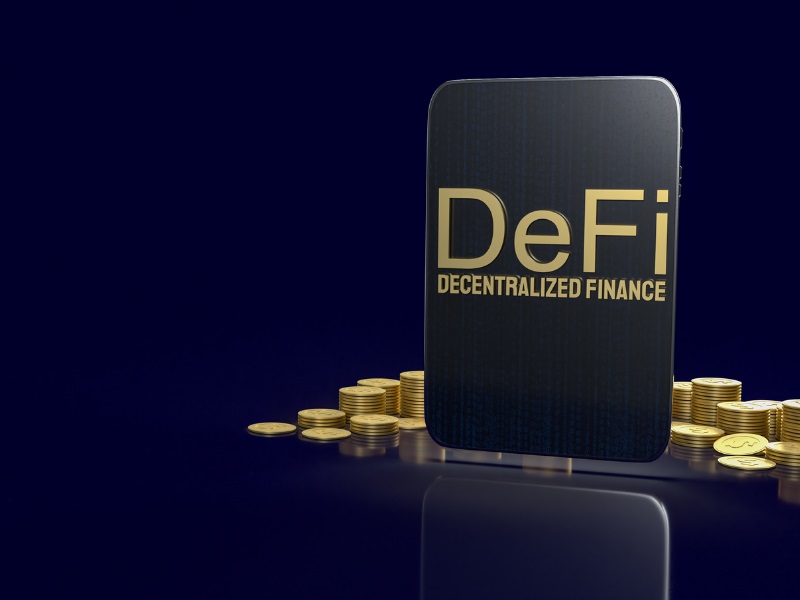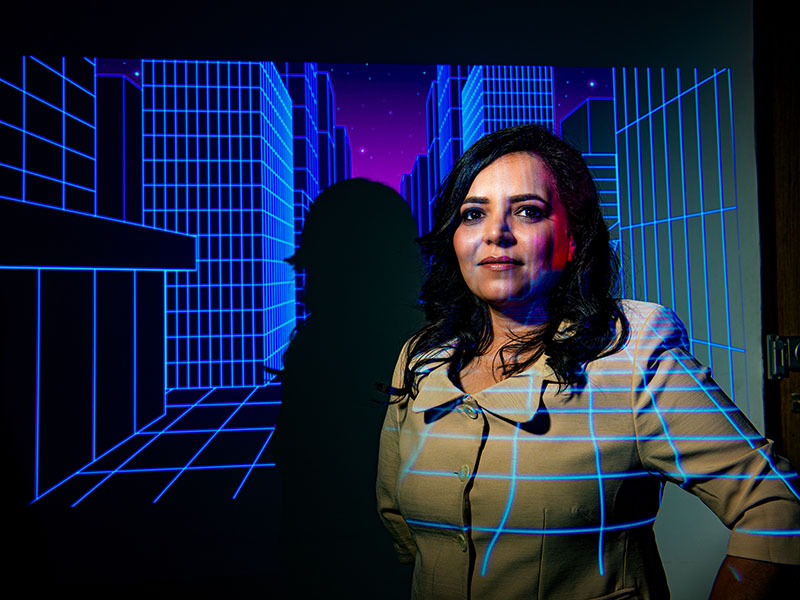
A beginner's guide to DeFi
A comprehensive but concise guide to decentralized finance you would most certainly find useful as you venture into the cryptoverse
 Since the concept of crypto was brought to the world’s attention with the emersion of the crypto Bitcoin back in 2009, decentralized finance or DeFi has come a long way indeed. In fact, as mainstream global financial markets took a hit right after Covid struck early in 2020, DeFi applications began seeing some astonishing highs simultaneously. As data from DeFi Pulse suggests, the total value locked in DeFi applications as of the end of March 2022 is already about $92.85B.
Since the concept of crypto was brought to the world’s attention with the emersion of the crypto Bitcoin back in 2009, decentralized finance or DeFi has come a long way indeed. In fact, as mainstream global financial markets took a hit right after Covid struck early in 2020, DeFi applications began seeing some astonishing highs simultaneously. As data from DeFi Pulse suggests, the total value locked in DeFi applications as of the end of March 2022 is already about $92.85B. While the gradual development of the metaverse is introducing a major part of the global population to decentralized finance, the concept of DeFi is definitely not a new one. In reality, the DeFi movement has already been around for about a decade. Put simply, DeFi systems utilize crypto and the blockchain technology to essentially provide all sorts of services traditional finance can provide, but with more agility and no intermediaries to hinder said services.
For all you newcomers to DeFi, here’s a comprehensive but concise guide to decentralized finance you would most certainly find useful as you venture into the cryptoverse.
DeFi: Core Properties and Advantages
The rise of Bitcoin and crypto in general led to the creation of many niches within the crypto space, of which DeFi is one. The movement started with multiple financial services based on blockchain that aimed to bank the unbanked by merging the core quality of crypto- decentralization- with traditional finance. Any financial service you require, from loans to trading to insurance, DeFi makes available to you simply through a smartphone and a decent internet connection.
Smart contracts power most decentralized applications (dApps), contracts that self-execute when pre-specified conditions are met. Since smart contracts were first put to use on top of the Ethereum blockchain, till date Ethereum remains at the center of the DeFi movement, hosting a major portion of the DeFi applications active today.
So, what are the exclusive properties of DeFi that makes dApps more advantageous than traditional financial institutions?
- As mentioned, dApps are global and can be accessed from any corner of the world, making finance easier for those who can not otherwise access such services due to difficult geographical locations and more.
- Operations of dApps are not managed or overseen by any centralized institutions or authority figures, giving one full control over their finances. Further, the fact that blockchain requires data to be verified by and stored across multiple nodes across the globe means there is no single point of failure with dApps. This allows for maximized security.
- The underlying code of a certain decentralized platform would be transparent on the blockchain for anyone to verify and audit, and all transaction records are also publicly available, lowering chances of frauds.
- All DeFi transactions can be done pseudonymously by clients, so they can keep their personal and financial information secure.
- Anyone can create a dApp with the help of the right instruments and skills, and unlike traditional finance, there are no gatekeepers barring the way.
- DeFi applications are usually interoperable- especially if they are built on the same blockchain. What’s more, existing DeFi applications can be merged to create entirely new platforms and products.
Elements of DeFi
What are some basic components that make up decentralized finance?
- Decentralized exchange platforms, also known as DEXes, let users with compatible crypto wallets trade crypto on top of a blockchain.
- Crypto wallets let you store your assets and connect with various exchanges for trading. You can access them with your private key, while you are also provided a public key to share with senders/sellers.
- Decentralized prediction markets allow users to vote on the outcome of various events, and profit from a winning bet.
- Oracles are used by many DeFi applications to bring off-chain data into the blockchain through smart contracts.
- And of course, layer-1 blockchains that developers build dApps on. Aside from Ethereum, some other popular layer-1 blockchains of the moment are Polkadot, Solana, and the Binance Smart Chain.
What are Some Well-Known DeFi Platforms?
While no specific date and time exists for the initiation of the DeFi movement, some platforms like Compound Finance of 2017 are very much responsible for bringing DeFi into the limelight. Some of these better known dApps include:
- Compound Finance: Crypto lending/borrowing platforms was one of the first successful use cases of DeFi, as embodied by Compound. Smart contracts on Compound match borrowers with lenders, and the dApp lets a client borrow against a deposited collateral.
- MakerDAO: MakerDAO is a stablecoin platform where the native stablecoin DAI is pegged to the US dollar at 1:1 and is backed by Ethereum-based assets as collateral. MKR is a second token supported on the Maker protocol, that allows holders to participate in platform governance.
- Uniswap: A widely-known DEX, Uniswap allows you to trade crypto by connecting your wallet to the platform. Additional features of the platform include an AMM, or automated market maker, that prices assets based on an algorithm and not an order book like a traditional exchange. Plus, you can become a liquidity provider on the Uniswap platform and lend out assets to the platform’s liquidity pools, and earn a part of the fees the exchange earns as a reward.
- Augur: This one is a prediction market dApp that allows you to bet on the outcome of an event in exchange of a fee.
- Synthetix: Synthetix is a dApp that allows you to create synthetic versions of real-world as well as crypto assets. To create these synthetic assets, you would have to lock up collateral into the Synthetix smart contracts.
- Chainlink: This is a decentralized oracle network of nodes that provide information from off-blockchain sources to smart contracts on request.
The DeFi world is not without its risks, so make sure to be aware of all associated jeopardies before you invest in a certain protocol. As a beginner, you must take care to start with a token of sizable market capitalization, so the investment risks are lower. Plus, make sure to learn well of the platform’s background and history before you invest.
We wish you good luck as you enter the world of DeFi!
The pages slugged ‘Brand Connect’ are equivalent to advertisements and are not written and produced by Forbes India journalists.














